Sustainability studies and art – Allies for transforming narratives
02.12.2021
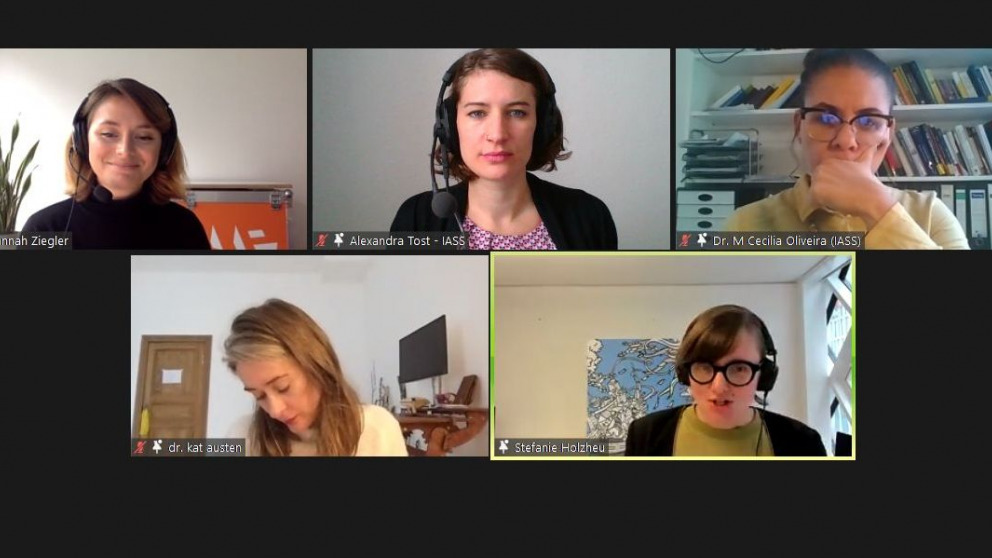
A symphony composed by the melting arctic deeply touches an audience of policymakers at COP25. A photograph inspires a political scientist to expand her research on the Amazon with a performance set in a Berlin city forest. And a museum about possible futures doesn’t just have an education team running workshops for its exhibitions but dedicates a whole floor to a lab where scientists and artists can “go nuts” in collaborative projects.
These experiences illustrate how scientific disciplines, research and the arts can be integrated to catalyze sustainability transformations. They were shared by Kat Austen (Studio Austen), Maria Cecilia Oliveira (IASS) and Stefanie Holzheu (Futurium) at the Forum Wissenschaftskommunikation - the largest conference for science communication in the German-speaking area. The session was organized by the IASS research group Democratic Governance for Ecopolitical Transformations (Ecopolitics) and moderated by me. It reflected on two working questions:
- What role does art have in changing dominant narratives in society?
- Are there ethical and aesthetical limits for the use of art to communicate science?
Art can provoke us to ask profound and personal questions that unlock unique transformative forces. Transdisciplinary research combining art and science also helps us to generate new knowledge by designing this exchange as a two-way communication. In the session, the panelists discussed the possibilities and challenges for reshaping our imaginaries through transdisciplinary collaboration with the arts. Apart from fostering a special connection amongst the speakers and the audience, the discussion contributed to the research group‘s mission to critically examine contemporary struggles in democracy and explore how knowledge about Earth systems transforms political spaces and environmental justice agendas.
What more do we need to know before we act, and how do we need to know it?
Knowledge and its context are central for Kat Austen, an artist and fellow at the IASS who focuses on environmental issues. She is convinced that we need to create empathy with the “non-human other” that goes beyond ecological grief. She works at the intersection of arts and science, melding scientific disciplines with media. Through the creation of sculptural and new media installations she combines performances with participatory work. Her practice is underpinned by extensive research and theory where interdisciplinarity is a means of creating otherwise inaccessible knowledge.
Austen’s work “Matter of the Soul” is a symphony about the Arctic under anthropogenic influence. It emotionally engages with the story of dispersal in the Arctic. Adapted scientific instruments measure physical and chemical properties of water to generate sounds from the dispersal of water as it turns from ice into seawater. She does this “to highlight the global-local nature of the problem space and to literally bring home the emotional impact of the inherent loss woven into the changes wrecked by the climate crisis and industrialization in the Arctic.”
Policymakers have told her that the work has made them gain an emotional knowledge of the climate crisis in a way that they had not been able to access before. It is clear for her: Bringing art and science together can raise new questions of relevance to narratives of sustainability and can prompt new discussions and discourses that would be difficult or impossible to access otherwise.
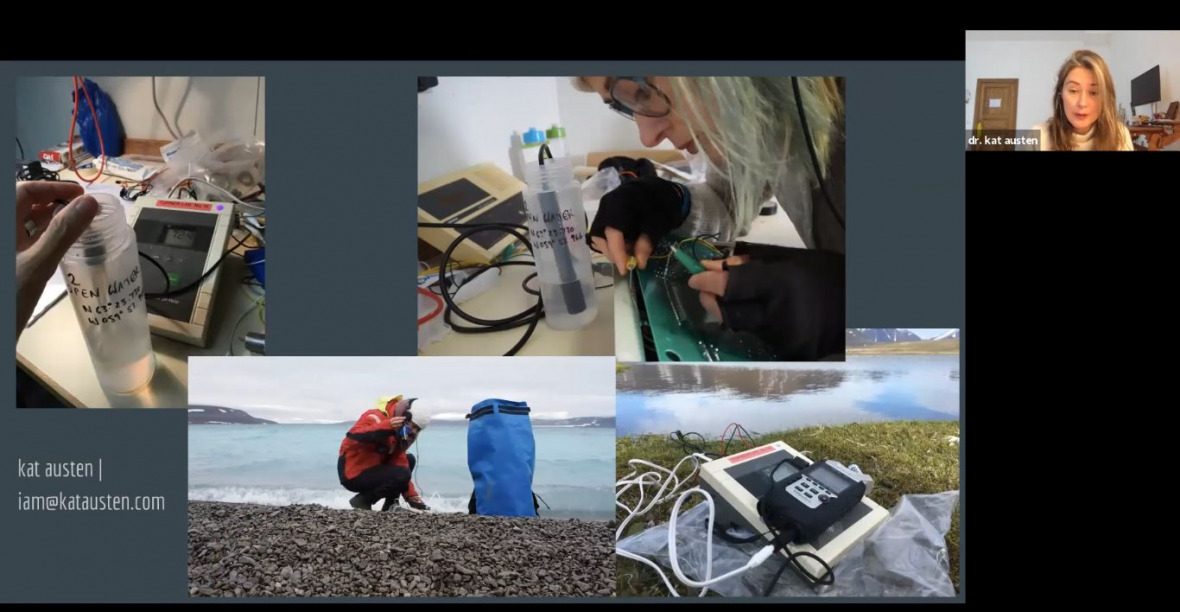
Urihi - dissent political images of the Amazon Rainforest
Maria Cecilia Oliveira’s shared experience departs from a visual input: Huge pink trees forming a dense fluorescent tropical forest. The bird’s-eye view picture reveals what it beholds: a mountainlike, cone-shaped hut standing in the middle of it. The picture is titled Urihi, meaning “my land/the great forest land” in the indigenous Amazonian language of the Yanomami people. She explains that in our society urihi – terra-floresta - would mean nature. Oliveira was startled when she discovered Claudia Andujar’s photo from 1976 while researching the implementation of the Paris Agreement and its implications for the Amazon Rainforest. As an art scholar, she is used to combining her academic work on international relations, climate change and environmental humanities with the exploration of aesthetic experimentation and performance. At the IASS Potsdam, she leads the research group Democratic Governance for Ecopolitical Transformation.
The encounter with this picture was an event for her, as in the work of French philosopher Gilles Deleuze who said:
“The possible does not pre-exist. It is created by the event.”
Gilles Deleuze
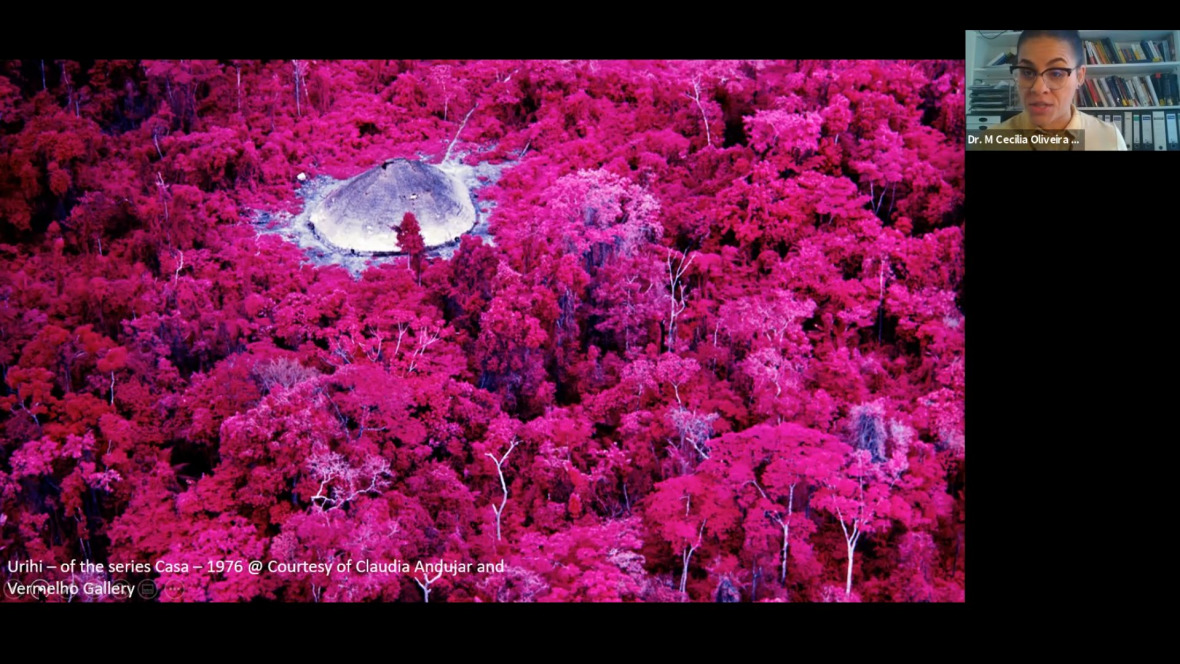
Oliveira tells: “I realized that to understand the political history of the present, thinking about the Amazon, I would need to explore science but also the invention of the Amazon and its territory.” The piece of art did not only lead her to reconsider even epistemological approaches. It also prompted her to explore pictures of the Amazon relating Alexander von Humboldt’s Landschaften to historical political imaginaries of the region. She even created her own images through an art performance (Video), which in turn enriched her postcolonial analysis.
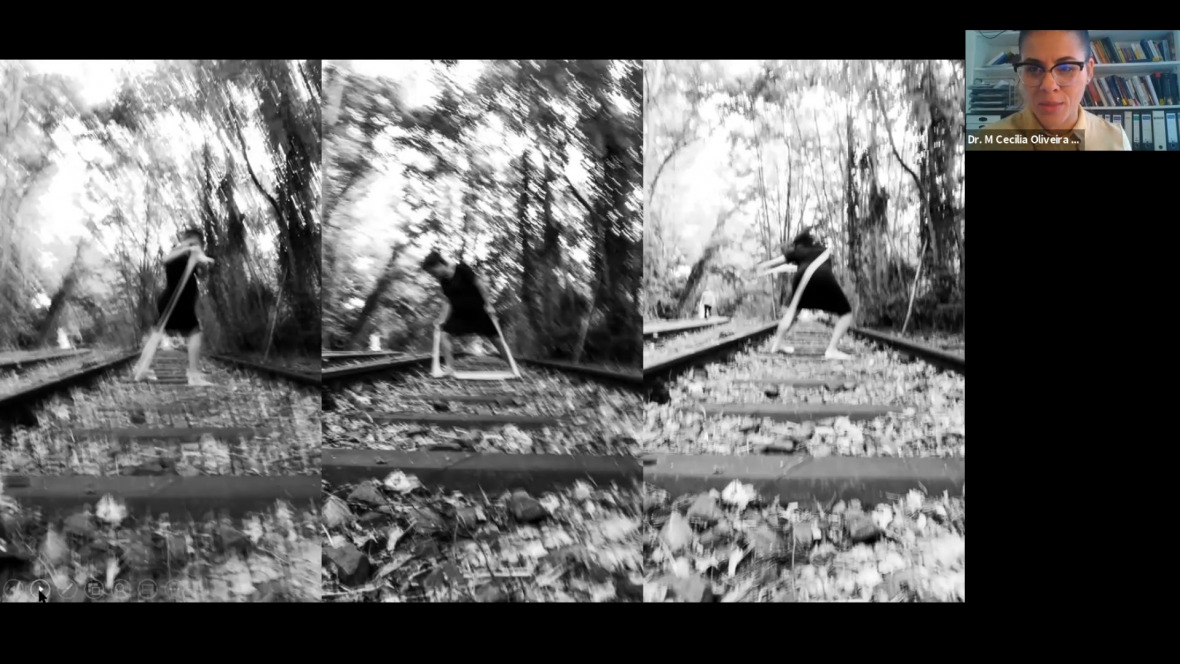
Scientific methods and fantasy create fictional scenarios in the house of possible futures
In the case of Futurium Lab, represented by panelist Stefanie Holzheu, the cooperation of scientists and artists on sustainability-related topics comes as no surprise. Occupying a whole floor of the Futurium – a museum-style house of possible futures in Berlin – the Futurium Lab engages with “future makers” such as scientists, citizens researchers, artists and visitors. For example, through speculative design, it invites participants to explore how the future world could be if we keep going the way we are going now.
A current exhibition, “The Outside Inside” by Johanna Schmeer, showcases plants, lichen, and fungi in a sensor-equipped garden, confronting us with species that can adapt to rapid ecosystem changes - in contrast to the vast majority who does not. Here, scientific methods and fantasy create fictional scenarios that enable citizens to feel and understand where scientific innovations might lead us and provide a platform to discuss those scenarios.
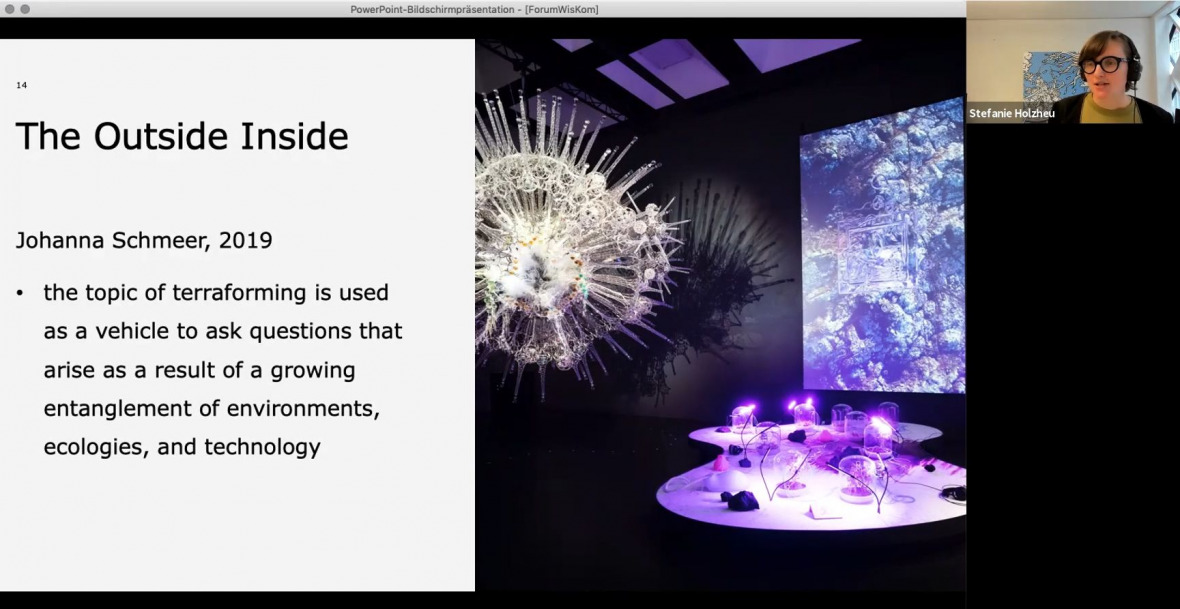
Divisions between academic disciplines, modes of research and the arts continue to persist. While there are difficulties in forming transdisciplinary projects between artists and academia, there are spaces, initiatives and people engaging in overcoming those limits. Collaboration between science and the arts can challenge us to think critically and unlock new possibilities for the future.
This is worthwhile because they are great allies.
